
7 shrubs for a city garden
Our tips to design your urban garden with ornamental shrubs
Contents
In a town garden, although space is often limited, planting a few shrubs is essential to bring volume and structure to the area. Depending on your garden size, you can plant a fairly diverse range of bushes, taking into account their resistance to urban pollution, and in some cases the limited soil volume. For these gardens, often shaded because enclosed by walls, you should also consider plants that tolerate significant cast shade. In any case, your choice will fall on shrubs remaining of a reasonable size at ripeness, with varied shapes, shrubby and climbing, which can occasionally be grown in pots… which still represents a fine sample from the wide range of bushes. The little extra of your garden: it is a particularly sheltered spot, so you can therefore install bushes that are less hardy or more wind-sensitive than in larger gardens!
Discover our selection of ornamental shrubs, mostly evergreen but also deciduous, that perform wonderfully in a small town garden, whether you live in the north or south of France. These bushes all show plenty of personality, and can be considered for gardens from 40 m².
→ Also discover our selection of trees for a town garden
Sorbaria sorbifolia 'Sem': striking foliage in partial shade
Also called “false spirea”, Sorbaria sorbifolia ‘Sem’ is fully tolerant of urban atmospheres, and its modest size (about 1.5 m) makes it well suited to town gardens. Its fern-like appearance with vivid colours is all part of its charm: breaking bud early in March, the deciduous foliage is initially tinged with pink and orange-red then a bright chartreuse green, turning orange-red in autumn. Flowering occurs in summer with elegant, upright, creamy-white panicles, very light.
It is perfect for sheltered enclosed gardens, in full sun or partial shade. Sorbaria sorbifolia ‘Sem’ will remain compact with a rounded habit, and is ideally planted in a large container, as it tends to sucker, but this is easily forgiven as it is so superb! It associates well with all sorts of foliage and types of flowering: Azaleas, Spiraea ‘Goldflame’, daylilies, grasses, Iris, etc.
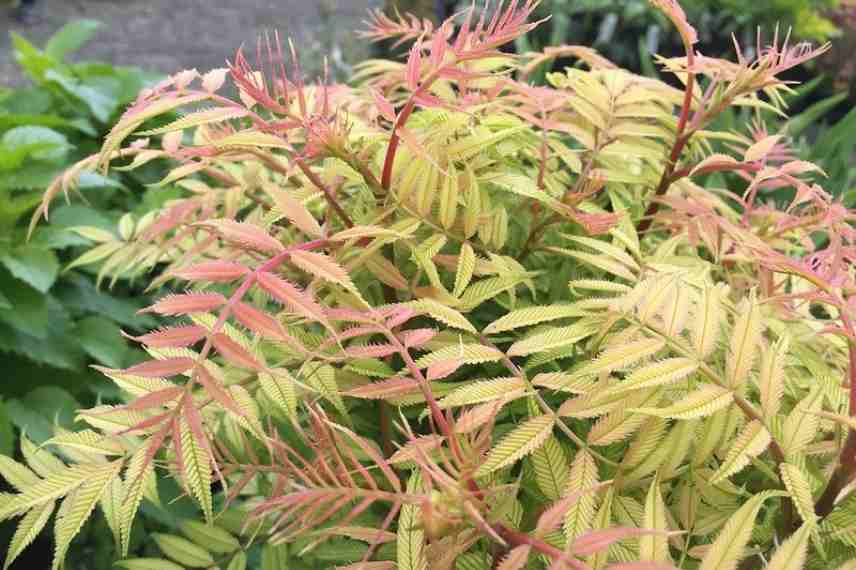
Sorbaria sorbifolia ‘Sem’ (Photo: M. Hansen)
→ To find out more, see :
- our complete fact sheet on Sorbaria sorbifolia
Read also
Designing a city gardenDicksonia antartica: star of a contemporary or exotic garden
Protected in a city garden, the tree fern is a real boon for anyone wishing to create an exotic or contemporary atmosphere in their small shaded urban garden. By investing in this type of shrub, in a city garden too small to accommodate a tree, you immediately create vertical interest and a tropical feel with an exceptional plant! While it climbs to over 10 m in its natural medium (Oceania), Dicksonia antartica displays a maximum height of 4 m and a 2 m spread here. Evergreen in mild climate, hardy to -10 °C, it will need protection in winter if it does not benefit from these conditions. Its fronds, resembling fern leaves, unfurl into glossy foliage, soft to the touch. Plant it in fertile soil, rich in humus and well drained.
It is magnificent grown in a large deep pot, contemporary in style, and very ornamental when surrounded by masses of foliage in varied shapes and colours, which enhance the lush impression: Hellebores, Brunneras at its base, Fatsia japonica, Phormiums, light Carex, Hakonechloas, but also boxwood balls!
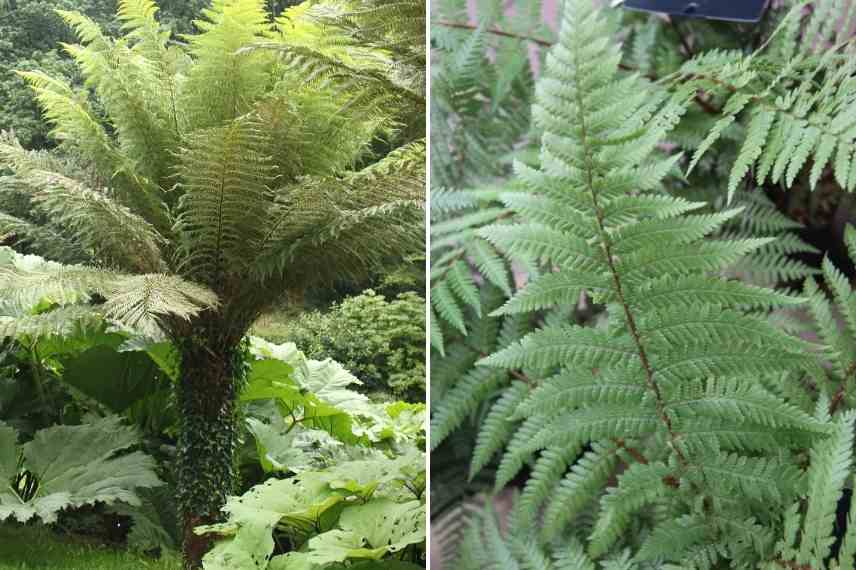
Dicksonia antartica
→ To find out more, see :
- our detailed page on Dicksonia antartica and on beautiful tree ferns
Discover other Urban garden
View all →Available in 0 sizes
Available in 0 sizes
Available in 1 sizes
Available in 1 sizes
Available in 2 sizes
Available in 0 sizes
Available in 2 sizes
Available in 2 sizes
Available in 1 sizes
Available in 1 sizes
Skimmia japonica: magnificent flowering in shade
Skimmias are small bushy evergreens, very useful for enhancing a small border in shade, even deep shade, coping very well with urban atmosphere. Such rather dark corners are common in small urban gardens where soil stays constantly moist. Skimmia japonica ‘Rubella’ will enjoy and adapt to these conditions; it will also be sheltered from cold winds it dislikes. It is hardy down to -15 °C, so can be planted almost anywhere. Its foliage is dark green, decorative even in winter, tinged with red. It will begin to bear beautiful garnet-red buds in mid-winter, opening into long pink panicles (8 to 10 cm) between April and May. Of slow growth, it will assume a rounded bush habit, wider than tall, reaching 1.20 m maximum height. Male cultivar, associate it with female Skimmias to pollinate them and obtain red berries.
Combine it with shrubs preferring acid soil such as Pieris or Enkianthus, which will take over after its flowering, or with delightful ‘Kew Green’, a Skimmia with cream flowers, as well as Osmanthes, Leucothoe, Rhododendrons, Bergenias…
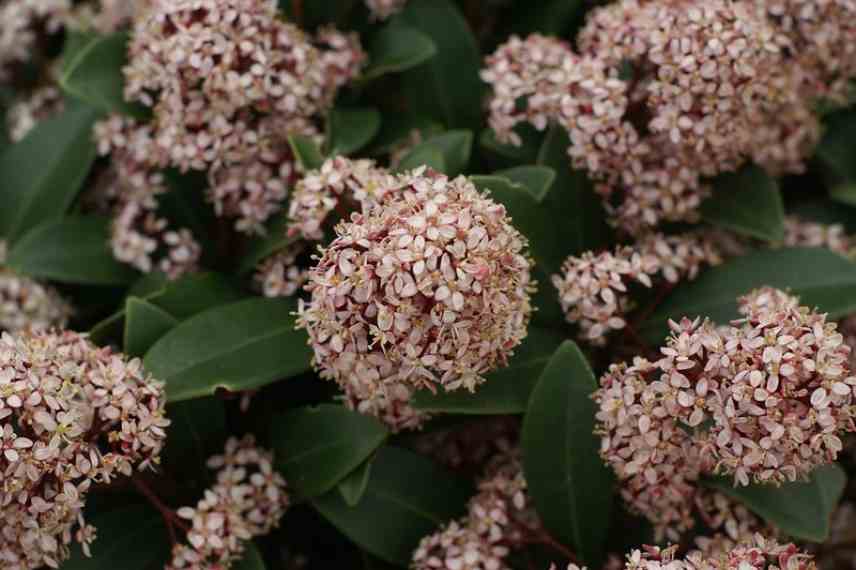
Skimmia japonica ‘Rubella’
→ To find out more, discover our complete factsheet on the Skimmia japonica and Olivier’s video on Skimmia
Read also
10 hardy evergreen shrubsOne fruit tree, two different bushes!
A dwarf fruit tree is a lovely way to combine useful and pleasant in your south-facing mini-garden. The two fruit trees I recommend are of great ornamental value and can be grown in open ground or in a large container.
Tolerating pruning very well, a fig tree offers great interest thanks to its rounded habit, distinctive branches and original foliage. The Dwarf Ficus ‘Figality’ is a delightful bush with a compact habit, not exceeding 1.80 m in height for 1.20 m spread. Its velvety foliage turns yellow in autumn. Self-fertile, it produces abundantly in August. Hardy down to -15 °C, ideal for a south-facing town garden. With its flexible branches, you can even train it against a wall.
A Corylus avellana ‘Contorta’ has huge qualities for a town garden: remaining modest in size (2 to 3 m high by 2 m spread) and slow-growing, this hazel has an absolutely graphic and original twisted habit, particularly in winter when bare. You can find forms with green foliage turning yellow, or purple. These are bushes requiring sunny to part-shade exposure. With dwarf variety ‘Scooter’ (1 m in all directions), a tiny town garden will do! This type of hazel remains of interest for its twisted habit suited to Japanese-style or contemporary gardens, more than for its rather insignificant fruiting.
Henri's honeysuckle: ideal climbing plant for small gardens
A honeysuckle is a type of shrub interesting for more than one reason in a small urban garden: a climbing plant, it frees up ground space, brings structure, and flowers verticals in the most beautiful way. The Lonicera henryi species is fortunate to be evergreen, robust, to tolerate pollution well, to accept both shade and partial shade and to offer us a pretty trumpet-shaped flowering in summer producing a bi-coloured pink-orange effect.
In short, it is the ideal candidate to take on a trellis in almost any garden, and in all types of soil that are sufficiently fresh. Reaching 2.5 m tall (even up to 4 m on a tree) by 2 m wide, it can easily cover an unsightly wall or help thicken a hedge. It suits every garden type, performing particularly well in a romantic setting and a wild tangle of plants!
(please note: among climbing plants, trumpet vine and climbing hydrangeas also tolerate urban pollution very well)
→ All about honeysuckle.
Euphorbia mellifera: sublime shrub in mild climates
Here is an Euphorbia still rarely encountered, with a shrubby habit, very elegant in a small town garden in mild climate, on the coast, or in southern France. Reaching at maturity 2 m high by 2.5 m wide approximately, it has a bushy, globose habit and superb oblong evergreen leaves in pale-green rosettes. It favours a south-facing position or very light shade, hardy down to -8 °C if well protected (will regrow from base if foliage damaged). Flowering occurs in May–June, plant is then covered in brown-orange scented, melliferous flowers. This shrubby euphorbia needs fresh but well-drained soil. Plant it along a sunlit wall where it will thrive.
Combining Euphorbia mellifera with broad-leaved foliage creates an exotic ambience (Eriobotrya japonica, Musa, Cannas, Rodgersias…), while combining it with linear or greyer foliage recreates a Mediterranean or coastal mood (Cordylines, Pittosporums, rosemary, Stachys, Perovskias, grasses…)
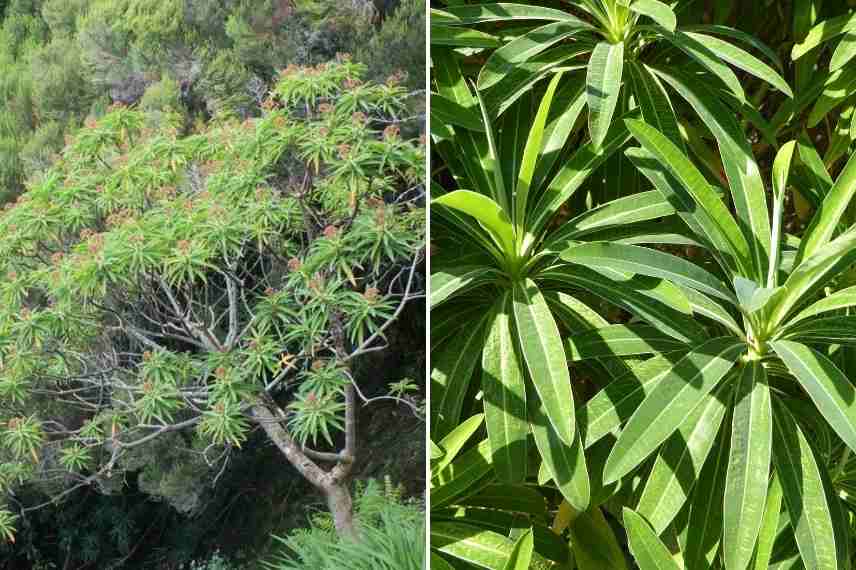
Euphorbia mellifera, habit and foliage (© Gwenaëlle David)
Ceanothus impressus 'Cool Blue': hardy for any dry garden
Have you considered Ceanothus blue for your town garden? Perhaps not, because you thought they only prosper in large gardens, or that their hardiness left something to be desired. It turns out that Ceanothus are perfectly suited to urban atmospheres, to dry, poor soils often common in city gardens, and that some varieties are hardy down to -15 °C.
This is the case for Ceanothus impressus ‘Cool Blue’, which, well sheltered against a south-facing wall, will thrive perfectly. It is particularly appreciated for its evergreen foliage variegated with cream, rather unusual for the genus, and for its dimensions (2 m high by 1.50 m spreading), very easy to integrate into your small space. Its pale blue flowers in the form of thyrsus are magnificent in spring, and are sometimes perpetual in autumn. Very bright, it will contrast nicely next to a purple Physocarpus, add great softness to flowering of Clematis montana. It will also combine very well with some cistus, orange Helianthemums, dry-soil grasses, etc.
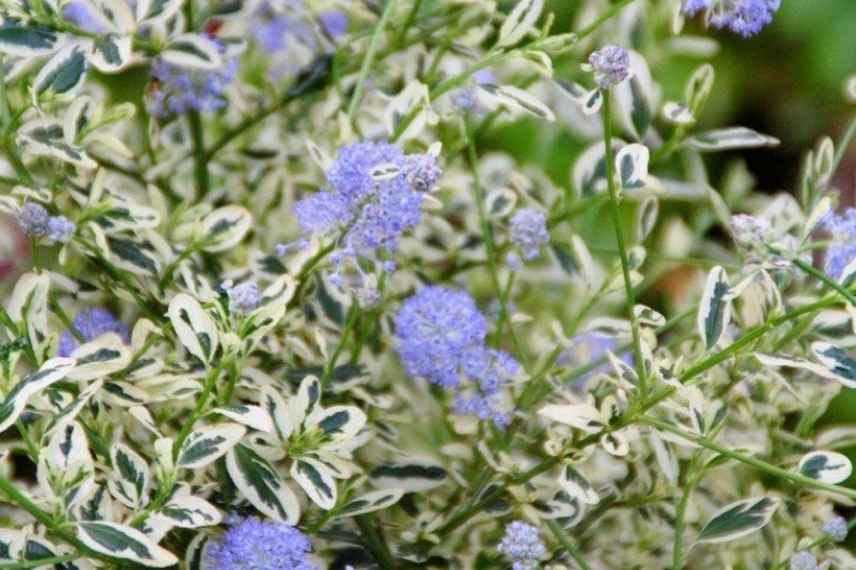
Ceanothus impressus ‘Cool Blue’
→ Discover our comprehensive fact sheet on Ceanothus
- Subscribe!
- Contents
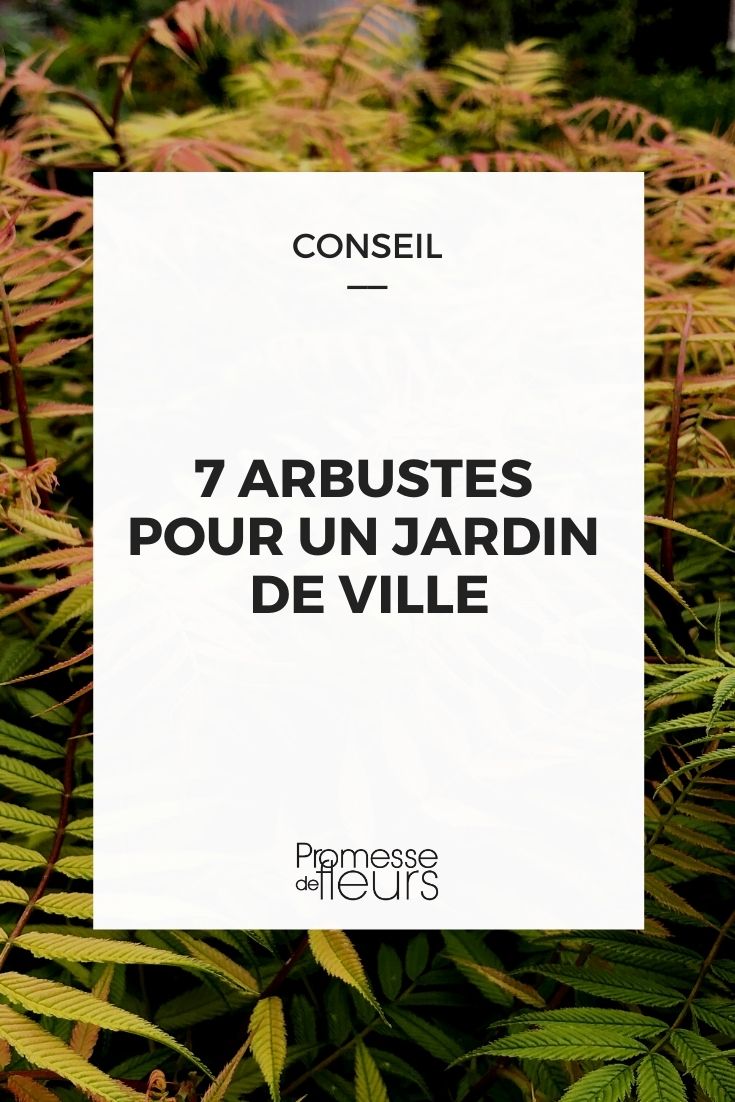































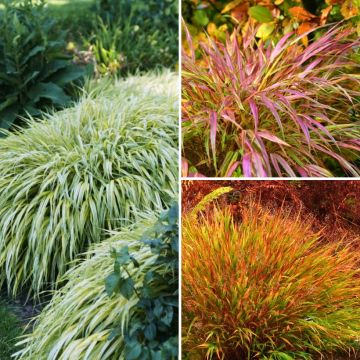

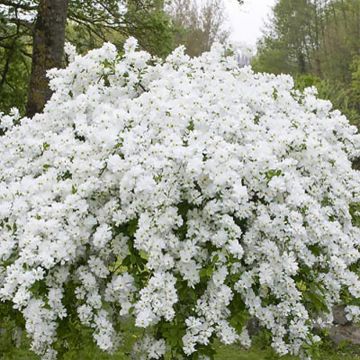
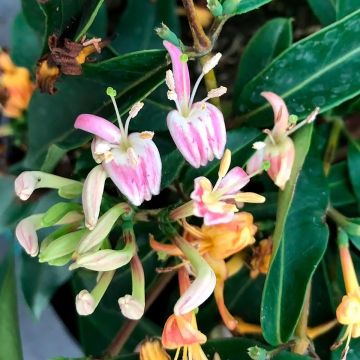
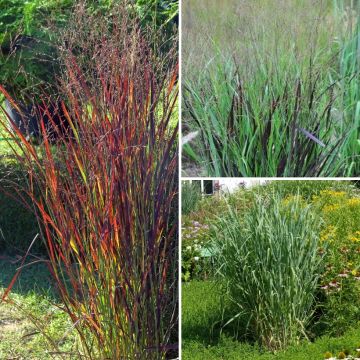
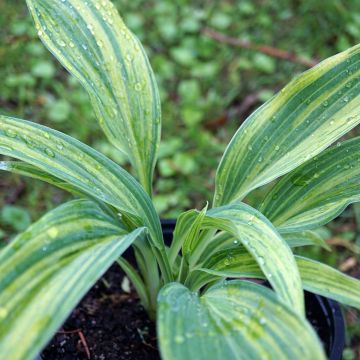
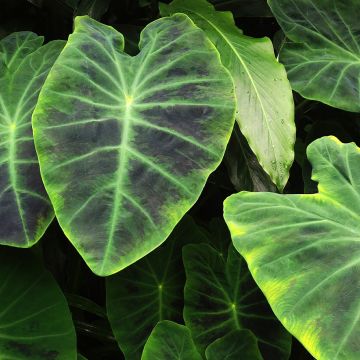
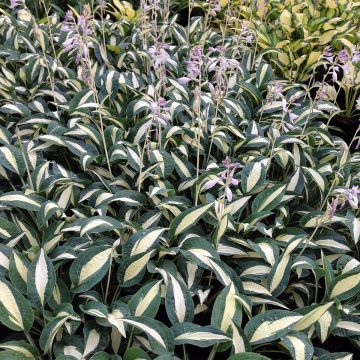

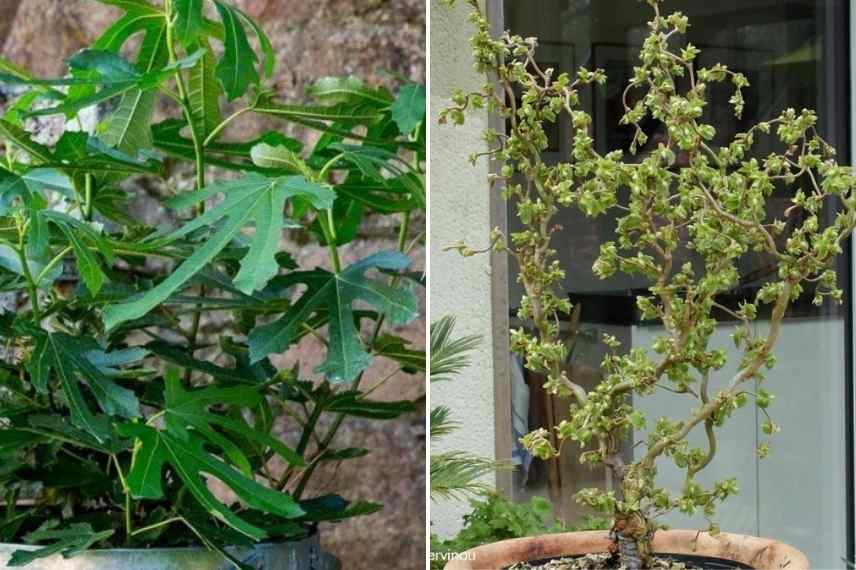
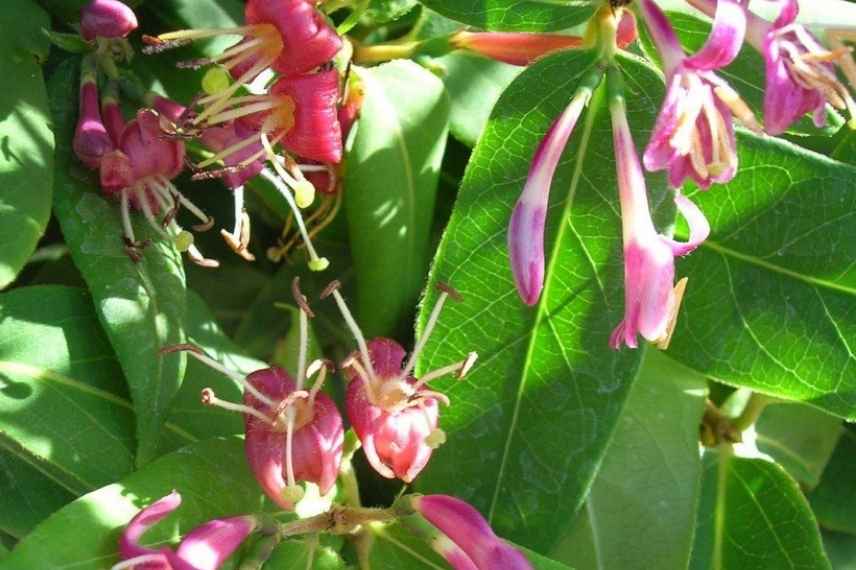
Comments